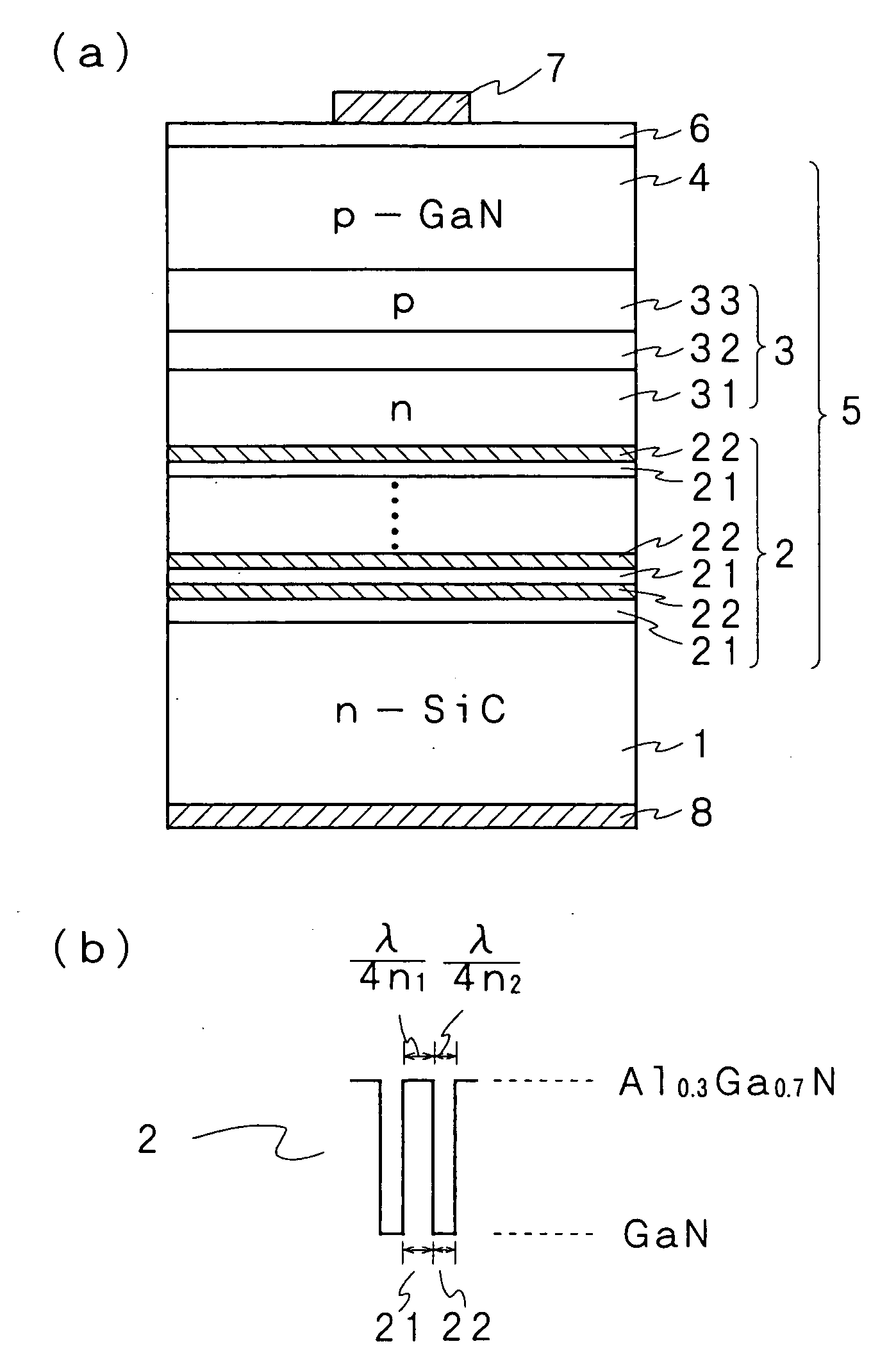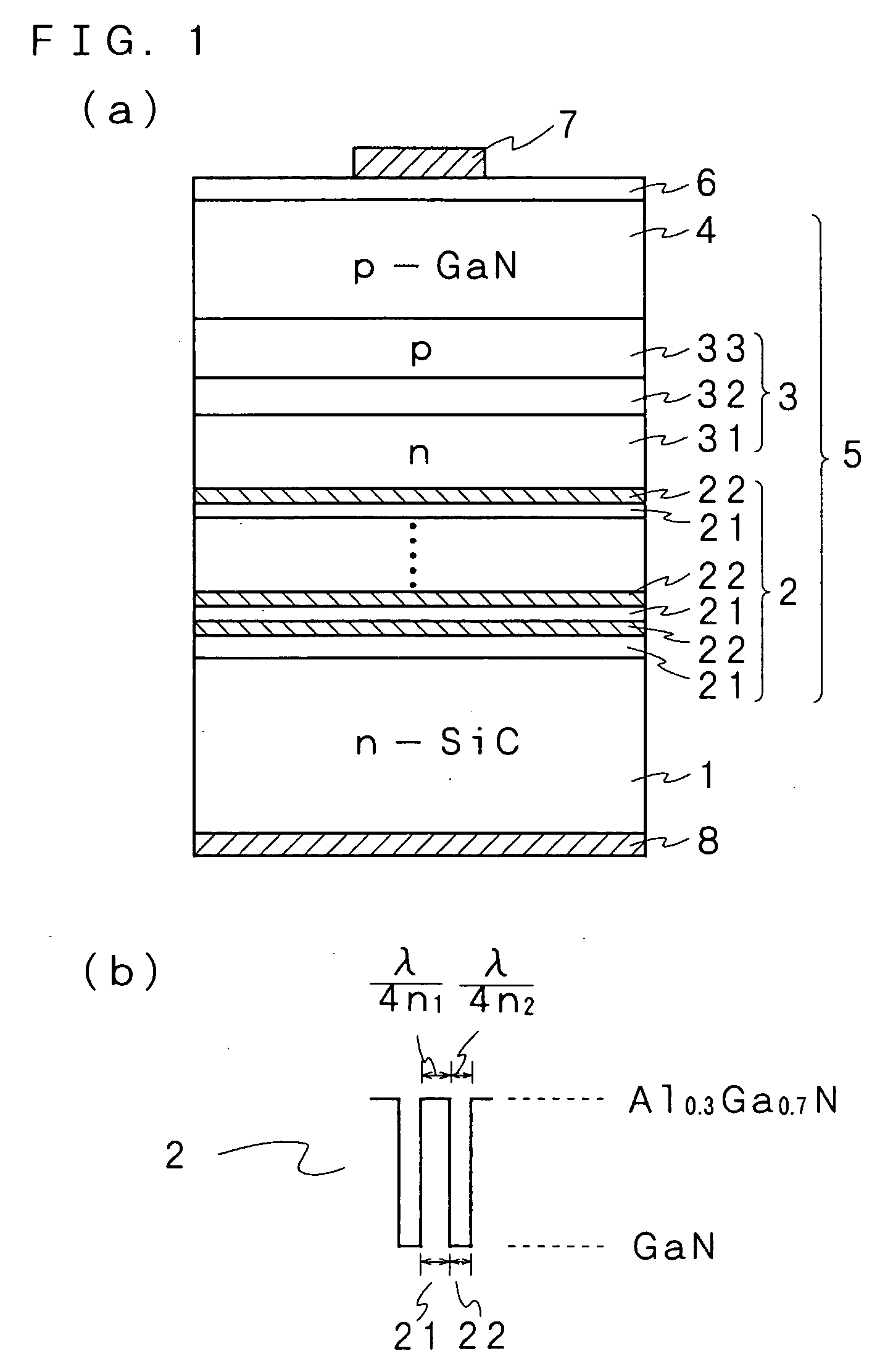Nitride Semiconductor Light Emitting Device
- Summary
- Abstract
- Description
- Claims
- Application Information
AI Technical Summary
Benefits of technology
Problems solved by technology
Method used
Image
Examples
Embodiment Construction
[0031]An explanation will be given below of a nitride semiconductor light emitting device according to the present invention in reference to the drawings. As an explanatory cross-sectional view of an embodiment and a figure of an energy band figure of the light reflecting layer are shown in FIG. 1, the nitride semiconductor light emitting device according to the present invention is formed such that a light reflecting layer 2 which is formed by laminating low refractive index layers 21 and high refractive index layers 22 having different refractive indices alternately is directly provided on a SiC substrate 1, and a semiconductor lamination portion 5 which is formed by laminating nitride semiconductor layers so as to form at least a light emitting layer forming portion 3 is provided on the light reflecting layer 2. And an upper electrode 7 is provided on an upper surface side of the semiconductor lamination portion 5, and a lower electrode 8 is provided on a back surface of the SiC ...
PUM
 Login to View More
Login to View More Abstract
Description
Claims
Application Information
 Login to View More
Login to View More - R&D
- Intellectual Property
- Life Sciences
- Materials
- Tech Scout
- Unparalleled Data Quality
- Higher Quality Content
- 60% Fewer Hallucinations
Browse by: Latest US Patents, China's latest patents, Technical Efficacy Thesaurus, Application Domain, Technology Topic, Popular Technical Reports.
© 2025 PatSnap. All rights reserved.Legal|Privacy policy|Modern Slavery Act Transparency Statement|Sitemap|About US| Contact US: help@patsnap.com



